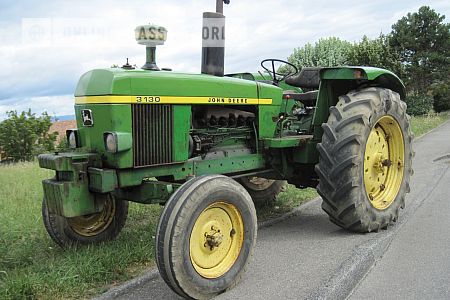

John Deere, no other name is better known in the agricultural sector. The colours grass green and rapeseed yellow have been the trademark since 1920. The logo of the leaping "deer", officially introduced in 1876, has become synonymous with the entire brand. Few other manufacturers have had such a long and illustrious career, serving as a showcase for American industrialisation.
In constant competition with other agricultural machinery manufacturers, the company has recently re-emerged as a global market leader. In 2017, John Deere celebrated its 180th anniversary, making it one of the oldest, best-known agricultural machinery manufacturers in the world.
But as so often, the beginnings were very humble. The John Deere era began near Oregon, in the state of Illinois, USA. In 1837, John Deere, the blacksmith who later founded the company and gave it his name, developed the first plough. This plough was self-cleaning due to its smooth surface. His customers were grateful for this development, as the heavy prairie soil stuck to the standard cast-iron ploughs of the time and made the job even more difficult.
Production quickly rose to 100 ploughs a year. By mid-century, John Deere finally entered into a new partnership and moved the company's headquarters to Moline on the Mississippi River. The river allowed him to use hydropower and created greater transportation options, as the infrastructure had been rather sparsely developed up to that point.
In the following years, more agricultural equipment entered the market. By the end of the century, the product range included ploughs, cultivators, precision seeders and harrows, and later loading and harvesting equipment. In 1886, John Deere died, giving the company its name, long before the first tractors could revolutionise agricultural management. Nevertheless, the company continued to grow.
Entering tractor manufacturing
In 1918, the company started producing John Deere tractors, which by now were headed by William Butterworth, a son-in-law of Charles Deere, John Deere's son. By buying a manufacturer that produced the famous "Waterloo Boy" tractors, John Deere consolidated its market and came up with high quality standards.
As early as 1927, the first combine harvester was produced, designed for the gigantic grain fields of the US. In the mid-1930s, John Deere launched the famous Model "A" tractor, powered by a 2-cylinder engine. A similar but smaller Model "B" followed the following year. The models were produced until 1952 and sold nearly 300,000 times.
A characteristic feature of these tractors was their three-legged construction. At the rear were two normal wheels with studded tyres made of steel or rubber and at the front two small wheels joined in the middle.
Shortly before the outbreak of World War II, on the 100th anniversary of its founding, the company already had sales of nearly US$100 million. This made it one of the largest manufacturers of agricultural machinery in the world.
During the war, John Deere produced weapons and tractors for the army, supporting the Allies in the fight against fascism in Europe. In the post-war years, the product range expanded. Among others, corn and cotton pickers were designed for the US market.
John Deere - The global enterprise
The first start of John Deere's global enterprise was to build a factory in Mexico. In 1956, John Deere eventually acquired shares from Heinrich Lanz AG in Germany. They were interested in Lanz's horizontal engine technology, having built horizontal "omnivore" engines into the Model A themselves.
In the following years, construction machinery, forestry machinery and garden equipment such as lawnmowers were also added to the range. On the German market, the green and yellow John Deere-Lanz tractors were popular. These were succeeded by the 100 series, which was built to John Deere specifications at the former Lanz factory. The new tractors were half-frame and already had engines with two or four cylinders.
John Deere has continuously improved and expanded its product range. To this day, John Deere tractors for the European market are designed, built and sold in Mannheim. For many years, John Deere was one of the best-selling manufacturers in Germany. A bestseller in the early 2000s, for example, was the 135hp 6820.
John Deere became a descendant of the famous Lanz Bulldogs by acquiring Lanz AG. Some Lanz models were still built up to the early 1960s with the familiar green-and-yellow livery and thus belong to the great Lanz era.
But even the later models can be described as German-made products, as they were tailored to the German market and produced at the original Lanz factory in Mannheim.
The quality tractors of the John Deere brand have become part and parcel of German agriculture and adorn many a classic tractor collection.